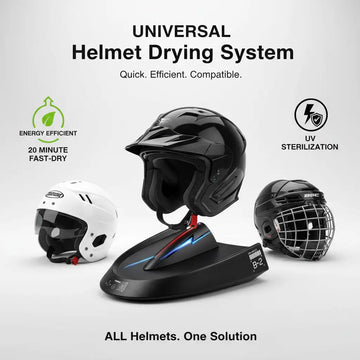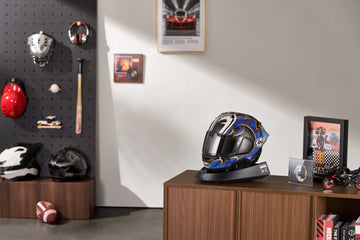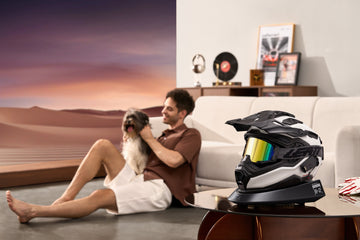Is a Helmet Dryer a Waste of Money or a Real Game-Changer?
At first glance, a helmet dryer might look like another “smart gadget” chasing your wallet. You might ask, “Why not just leave my helmet in the sun?” or “Isn’t this just a fancy fan?” But if you’ve ever dealt with a soaked helmet after a long ride or noticed that sour odor after a few weeks, you already know — air-drying alone doesn’t cut it.

1. The Real Problem: Sweat, Bacteria, and Time
Helmets are breeding grounds for moisture and bacteria. After every ride, your sweat seeps into the inner lining, and if it doesn’t dry quickly, it starts to smell. Worse, that damp environment can corrode the leather layer and even cause mold. Many riders try “natural drying” — leaving helmets under the sun or near a heater — but UV damage, high heat, and inconsistent drying often do more harm than good.
2. What a Modern Helmet Dryer Actually Does
Today’s quiet helmet dryers work at controlled temperatures below 48°C with airflow that targets the inner foam and vents. Many also include UV sterilization or ionization to kill bacteria and neutralize odor without chemicals. For soaked helmets, it can cut drying time from overnight to under two hours, and for daily use, it keeps helmets fresh and odor-free in about 30 minutes.
3. The “Smart” Factor: Convenience vs. Overhype
Some call it a “smart” product, but the real intelligence is in its practicality. It doesn’t need Wi-Fi or an app; it just needs to work reliably, quietly, and safely. The value isn’t in the technology — it’s in saving your helmet from early wear and your nose from suffering every time you put it on. Think of it as preventive care for both gear and comfort.
4. When It’s Actually Worth It
If you ride frequently — commuting, training, or even skiing — your helmet doesn’t get enough time to breathe. That’s when a dryer pays for itself. It extends the lifespan of your helmet, prevents odor build-up, and reduces cleaning frequency. Riders who dry their helmets regularly report less irritation and longer-lasting materials. It’s not about luxury; it’s about maintenance done right.
5. What to Look For
When choosing one, avoid models that overheat or use direct heat. Look for quiet operation (below 40 dB), low heat drying, and UV deodorizing options. Models that fit multiple helmet types — motorcycle, ski, or football — give more value. Reliable build quality and removable attachments also make cleaning easier.

Conclusion
A helmet dryer isn’t a gimmick; it’s a hygiene tool. It solves a real problem — moisture, odor, and bacteria — that every rider faces but rarely talks about. If you care about keeping your gear clean, fresh, and long-lasting, this small machine is worth every dollar.
Tip: Dry your helmet within 30 minutes after riding to prevent odor buildup and extend the lining’s lifespan. You’ll notice the difference after just a few uses.



